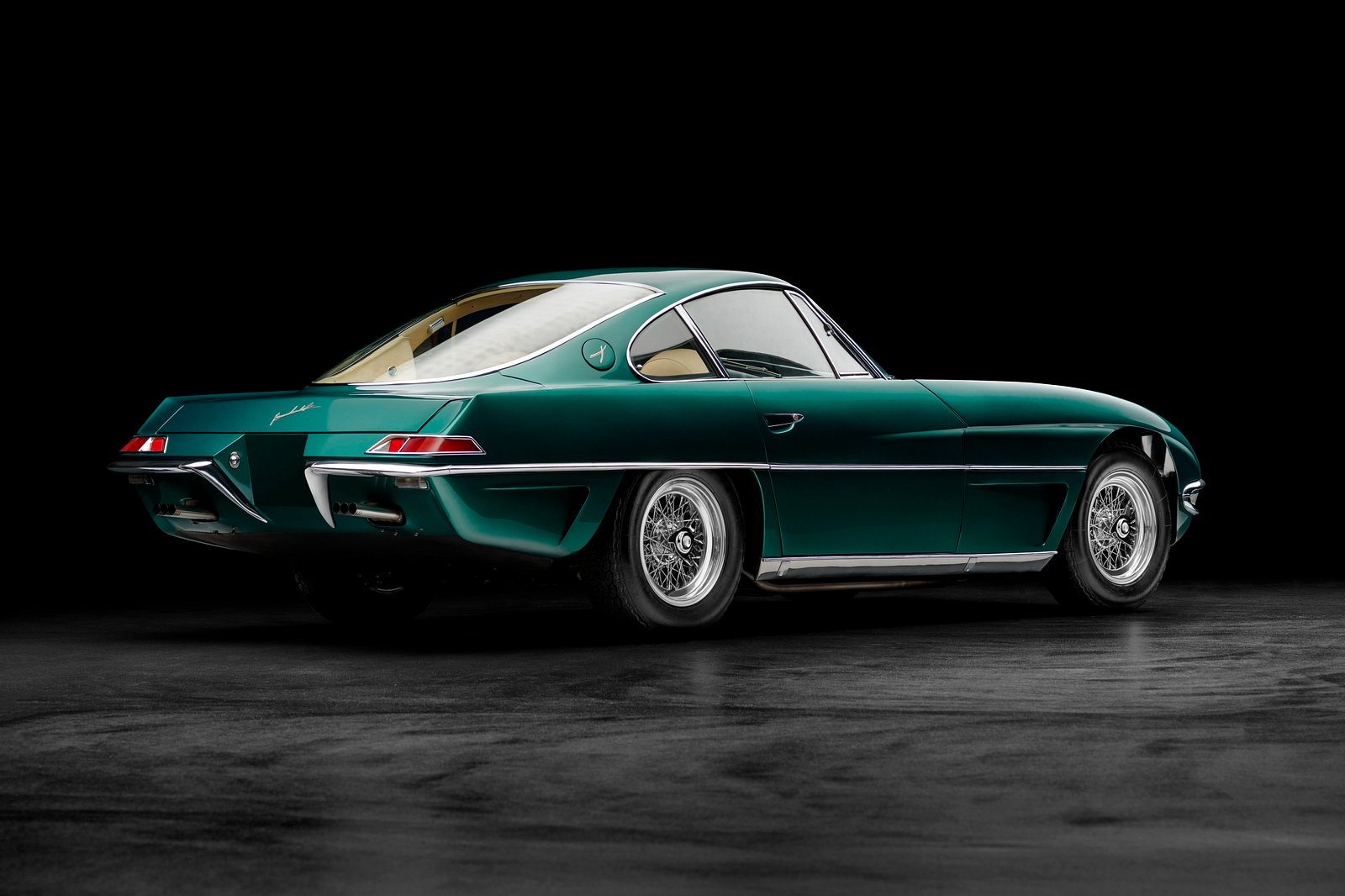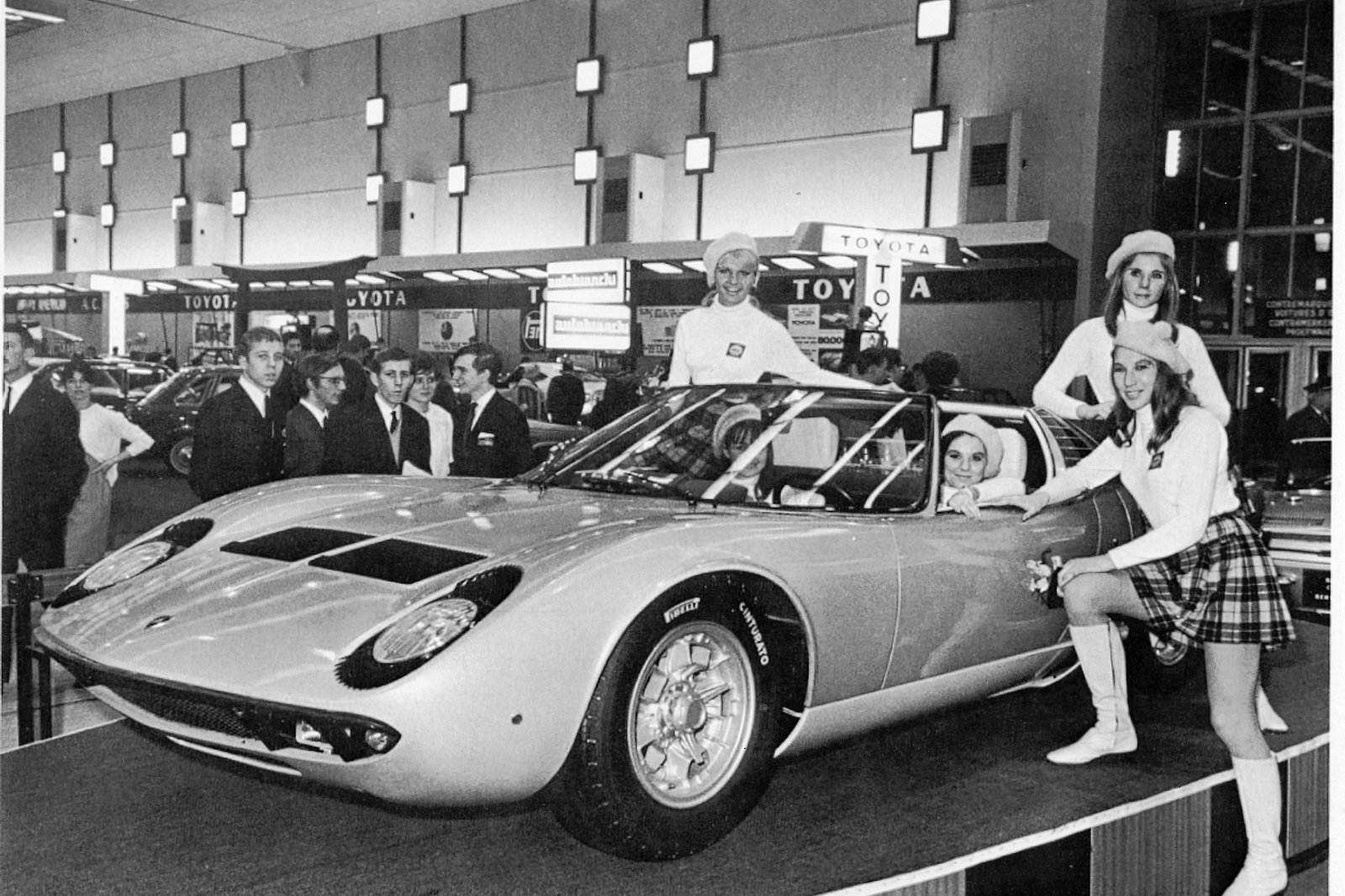And how every Lambo concept serves a production purpose.
What is the purpose of a concept car? In a nutshell, it exists to showcase an automaker's prowess in the areas of design and technology and to get a feel for what the buying public might take a liking to. The automaker is both showing off how good it is and asking the entire world if it is good enough.
Seeking approval is a big part of a concept's design and development, with case studies, customer interactions, and virtual experiments all playing a role in deciding the future of the vehicle being conceptualized.
Regardless of how it comes about, the goal is to put new innovations into a new product, but at Lamborghini, the future is not always previewed by a traditional concept. At Lamborghini, concepts often become customer cars, and one-off customer cars often foreshadow series-production ideas, or concepts, if you will.
With that in mind, let's take a look back at Lamborghini's 60-year history to see which cars shaped the brand's future.
Lamborghini burst onto the scene in 1963, and its first one-off was the 350 GTV. This previewed the 350 GT production car. Evolving the model were the two units of the 350 GTZ, built by Carrozzeria Zagato in Milan in 1965. In the same year, Carrozzeria Touring built two 350 GTS open-top cars, while Carrozzeria Neri & Bonacini, responsible for producing the tube frames of the 350-400 GT production cars, introduced the 400 Monza. Finally, in 1966, a shooting brake called the 400 GT Flying Star was produced by Carrozzeria Touring. This would inspire the Espada.
Lamborghini's approval of these low-volume machines helped inform its future direction, and soon after, Sant'Agata's craftsmen would begin making multiple variations of the same future production car, refining the intended concept until it was good enough to show to the public.
In 1965, Lamborghini began developing a car with an engine in the back, which would ultimately prove to be the stunning Miura, but at the time, Lamborghini was unsure of the direction to take. Thus, two design models were produced. Touring would build the P400 Tigre, while a model simply called P400 was created by some new upstart design house called Italdesign. Giorgetto Giugiaro was in charge - ever heard of him?
Neither design was successful as neither could adequately accommodate a rear transverse V12, and as a result, no 1:1 scale models were made. But the exercise was not a total waste. Giugiaro introduced the idea of mounting the doors to the roof and having them open forward and upward. It doesn't take a history buff to determine that this idea planted the seed for the scissor doors we'd one day see on the famous Countach.
1967 saw the arrival of the Marzal, a four-seater "glass" car. This show car, or concept car, became one of the most famous in the world, and several of the ideas introduced therein later found their way to production Lambos. A sharp front end, a hexagon motif, and enormous gullwing doors are among these standout elements, and although the hexagonal design would find its way to the Espada, those doors could not.
This wasn't the only design highlight that was scrapped due to technical complexity. The 1968 Brussels Motor Show hosted the debut of the one-off Lamborghini Miura Roadster. Even today, it is jaw-droppingly gorgeous, but Nunno Bertone allegedly claimed that the structural rigidity of the chassis, even with additional bracing, was not sufficient. These days, a couple of carbon fiber and titanium reinforcements would make it easily possible. We hope a restomodding company takes on such a challenge someday.
Around this time, Lamborghini was fervently at work developing a four-seater. The Espada prototype was shown off in 1967, while Lamborghini's small car project, the Urraco, was first shown off in 1968, with development taking place the following year. Jumping ahead a few years, Carrozzeria Frua produced the Faena in 1981, a four-door based on the Espada. Clearly, the idea behind the new Lanzador concept is nothing new, although its form of propulsion certainly is.
But not all such thoughts take as long to germinate. In 1970, Lamborghini test driver Bob Wallace revealed a racing-focused creation called the Miura Jota, a flight of fantasy created in Wallace's spare time. He had already helped Lamborghini come up with the Miura, and his one-off creation would inspire the four-unit production run of the Miura SV-J. One Miura SVR was also made, with this directly inspired by the Jota.
In 1971, Lamborghini would have broken the internet if such a thing had existed. The Countach LP 500 was presented at the Geneva Motor Show, and its purpose was to determine how customers and fans would react to a futuristic design that was a massive departure from anything that had come before.
As history shows, this would be one of the brand's most famous models ever. The initial production version was called the Countach LP 400 and arrived in 1973 with both a V12 engine and scissor doors, just like the concept. Both would become signature elements of Lamborghini's flagship offerings, and the tradition lives on in the Revuelto.
Also, in 1973, Bob Wallace challenged his bosses again by introducing the Urraco Rally, which led to 1974's Urraco P300. In 1976, the Silhouette arrived as an open-top Urraco P300, and its aero was inspired by the Urraco Rally. But Wallace was not done yet.
1973 also saw the arrival of the Jarama Rally, often referred to as the Jarama Bob, underscoring Wallace's importance in Lamborghini lore. This was his final creation and featured improved aerodynamics, less weight, and a more centrally positioned engine that was further back in the bay to enhance handling and balance. One could argue that Wallace's incessant engineering of rally-ready prototypes paved the way for the Huracan Sterrato and, in a way, even the Urus Performante, which was developed with a Rally mode for loose surfaces.
While aerodynamics and engineering were a big part of the value of these early concepts and low-volume vehicles, sometimes the leap forward came from no more than a desire to stand out, and Walter Wolf is famous for his influence on Lamborghini Countach styling.
In 1978, Wolf asked for modifications to his Countach LP 400, and as a loyal customer, Sant'Agata obliged. Bigger wheels wrapped in low-profile rubber were added, allowing for bigger brakes but necessitating larger wheel arches, too. But the most notable upgrade was the addition of a large rear wing. The resulting creation became known as the Walter Wolf Special, and several other Countach owners quickly began requesting similar modifications.
Comically, Lamborghini could not afford to re-homologate the car with the new wing, so it was sold as a separate accessory that would be bolted onto the new supercar in the dealer lot. If that was an issue for buyers, nobody ever said so. They were probably too busy doing a line of blow or combing the perm to notice or care, but from the Countach LP 400 S until the model's death in 1990, these upgrades were a fixture of the range.
In 1974, Bertone presented the Bravo, based on the Urraco P300. With a shorter wheelbase, the two rear seats were deleted. The famous phone dial wheels were introduced here, and these would be a distinguishing feature of the Countach, as would the decision to design the car with a ruler.
Curves were almost nonexistent, but the dramatic effect was exactly what people wanted. The Bravo was Lamborghini's first small two-seater berlinetta with a (relatively small) engine (not a V12), and it effectively inspired the niche that would later be filled by the Gallardo and eventually the Huracan. We're patiently waiting for the next chapter in the small Lambo story.
In 1980, the Athon previewed Lamborghini's expansion of the drop-top driving experience. Built by Carrozzeria Bertone, the design was so forward-thinking that Lamborghini says it could probably be put into production today with minimal modifications. What are you waiting for, then?
Another revolutionary idea was that of the LMA prototype, a vehicle that would eventually become the LM 002, a V12-powered, 124-mph off-roader that nobody loved at the time. But the world would come around, and today, the Urus, another high-performance four-door with some off-roading capability, is one of Lamborghini's most successful products ever. Again, it's clear that Lamborghini concepts do not come from traditional methods, and those concepts may not always make production immediately, but they are never forgotten about either.
Carbon fiber composite technology was also first seen on a low-volume car. Specifically, it was first introduced on the Countach Evoluzione. This was based on the Countach Quattrovalvole, but the body was made entirely of carbon fiber - long before McLaren Automotive even came into the picture.
At the time, working with the material was exceptionally tricky and limiting, but with the prototype weighing some 400 kilograms (882 pounds) less than the car it was based on, Lamborghini never stopped working on perfecting the use of carbon fiber. One could argue that the Countach Evoluzione is the spiritual grandfather of the epic Sesto Elemento, a car named after the sixth element on the periodic table and which pioneered the use of forged carbon.
Not all of Lamborghini's ideas have come to fruition. In 1988, Carrozzeria Bertone presented the idea for a front-mounted V12 in a minivan-like concept called the Genesis. However, this was ultimately ignored due to limited development costs, and Lamborghini instead focused on much more exciting projects.
In 1985, Lamborghini began developing something under codename P132, and in 1990, this debuted as the devilish Diablo. Two years later, the Diablo Roadster arrived, and in 1996, Carrozzeria Zagato unveiled the Canto, which very nearly made it to production. VW/Audi Chairman Ferdinand Piech deemed the design too soft compared to that of the Diablo and claimed it didn't project a typically Italian look. The Pregunta from 1998 and the L147 from 1999 also failed to make production.
Since then, several more modern concepts and one-offs have been produced, including the Cala, which was ultimately beaten to production by the Gallardo. Although it didn't become a series production car, the Cala did inspire the use of a V10 engine. Similarly, the Reventon's design directly influenced that of every Lambo since, and the Sian has paved the way for the current Revuelto with its hybrid technology, which, by the way, also found its way to the special-edition Countach LPI-800.
Simply put, every car that Lamborghini builds, whether it's a concept, a one-off, a low-volume special edition, or a design study, should be inspected closely for clues as to the brand's future. Almost nobody converts concepts to reality with as much frequency, and almost nobody does it with as much drama. Here's to the next 60 years of ludicrous Lambos.
 Lamborghini
Lamborghini
 Lamborghini
Lamborghini
 Lamborghini
Lamborghini
 Lamborghini
Lamborghini
 Lamborghini
Lamborghini
 Lamborghini
Lamborghini
 Lamborghini
Lamborghini
 Lamborghini
Lamborghini
 Gooding & Company/Mathieu Heurtault
Gooding & Company/Mathieu Heurtault
 Gooding & Company/Mathieu Heurtault
Gooding & Company/Mathieu Heurtault
 Lamborghini
Lamborghini
 Lamborghini
Lamborghini
 Lamborghini
Lamborghini
 Lamborghini
Lamborghini
 Lamborghini
Lamborghini
 Lamborghini
Lamborghini
 Lamborghini
Lamborghini
 Lamborghini
Lamborghini
 Lamborghini
Lamborghini
 Lamborghini
Lamborghini
 Lamborghini
Lamborghini
 Lamborghini
Lamborghini
 Lamborghini
Lamborghini
 Lamborghini
Lamborghini
 Lamborghini
Lamborghini
 Lamborghini
Lamborghini
 Lamborghini
Lamborghini
 Lamborghini
Lamborghini
 Lamborghini
Lamborghini
 Lamborghini
Lamborghini
 Lamborghini
Lamborghini
 Lamborghini
Lamborghini
 Lamborghini
Lamborghini
 Lamborghini
Lamborghini
 Lamborghini
Lamborghini
 Lamborghini
Lamborghini
 Lamborghini
Lamborghini
 Lamborghini
Lamborghini
 Lamborghini
Lamborghini
 Lamborghini
Lamborghini
 Lamborghini
Lamborghini
 Lamborghini
Lamborghini
 Lamborghini
Lamborghini
 Bonhams
Bonhams





Join The Discussion